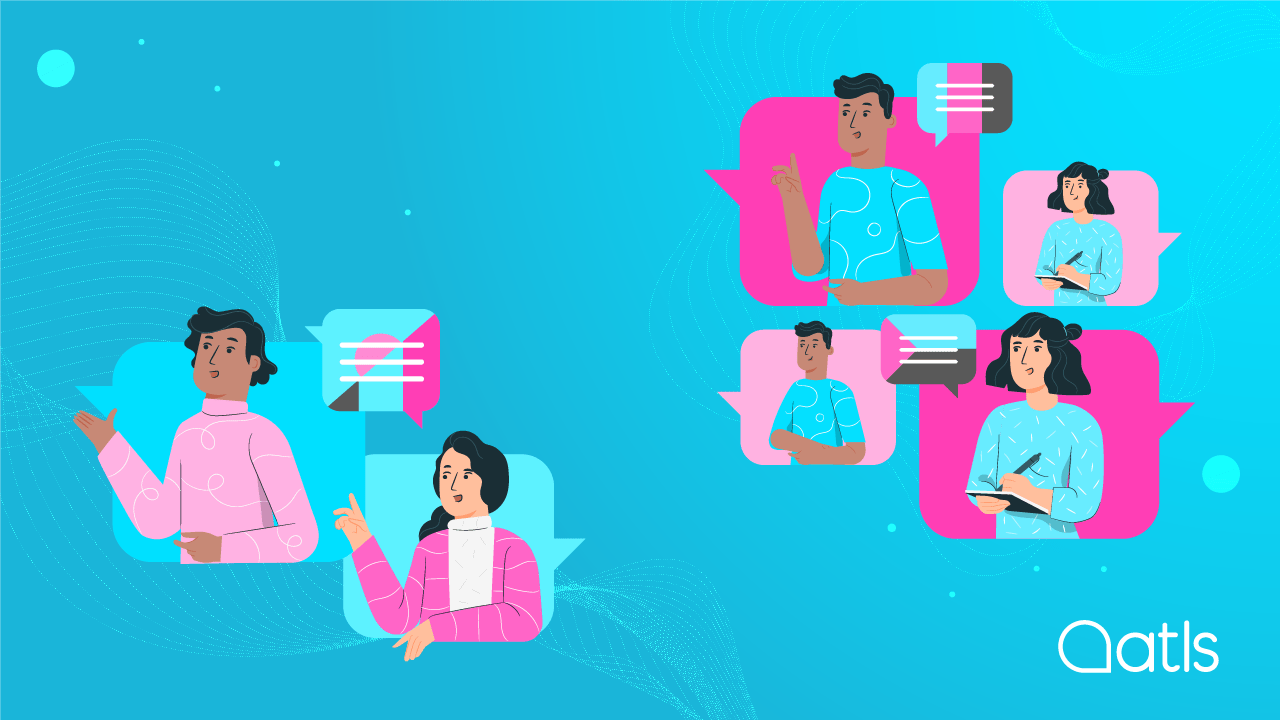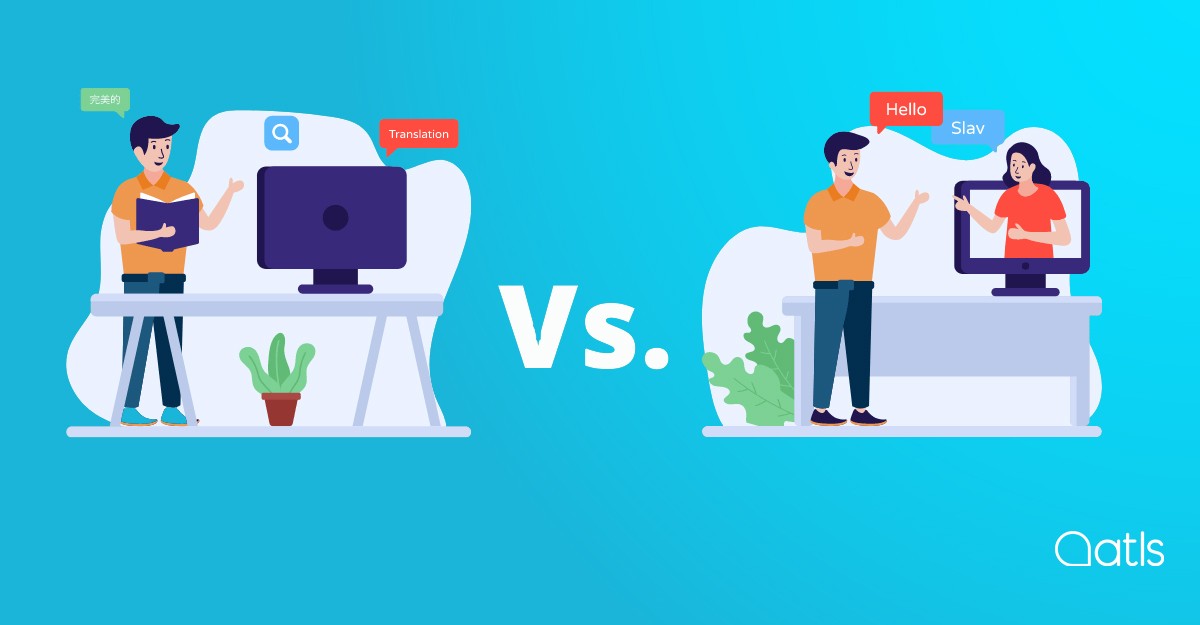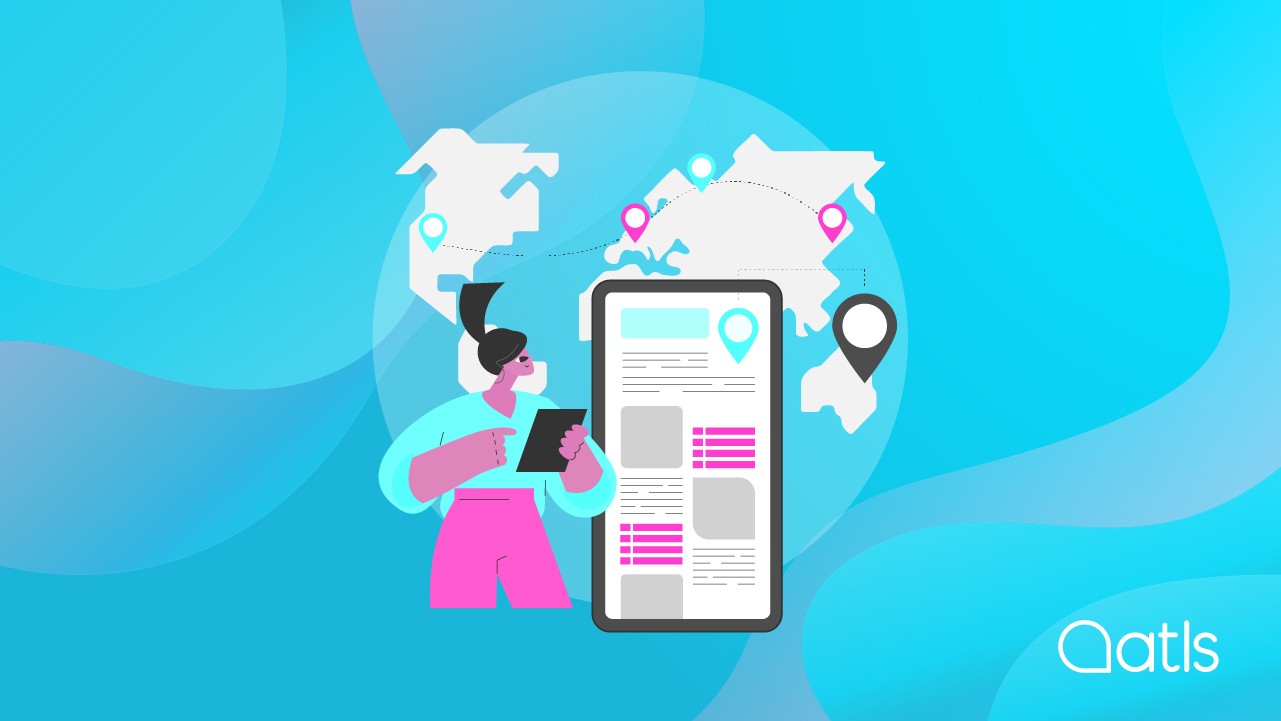Simultaneous interpretation vs. consecutive interpretation

Interpretation plays a key role in the field of languages. It enables messages to be conveyed orally by an interpreter, to be received by the audience in a language other than the speaker's. This process involves three key elements of communication: the sender, who conveys a message given in a language unknown to the receiver; the interpreter, who transmits the message in the language of the receiver; and finally, the receiver, who receives the information communicated by the interpreter. Various types exist today, and all require key interpretation skills: interpreters don't simply translate orally from one language to another; rather, they transmit all the elements involved in the message such as feelings and gestures. In this post, we'll focus on two types of interpretation that are widely used at events and conferences: simultaneous interpretation and consecutive interpretation. They are both incredibly important. Read on to discover what each type involves and find out the differences between the two types of interpreting. Don't miss out!
Find out the key differences between simultaneous interpretation and consecutive interpretation!
What is simultaneous interpretation?
Simultaneous interpreting is a dynamic and agile form of spoken translation often used at multilingual events, conferences and international meetings. The work involves the interpreter listening carefully to the dialogue in the original language, at the same time as transmitting the translation to the target language almost instantly. Soundproof booths, headphones and special microphones enable interpreters to work in real time, guaranteeing fluid communication between all participants. Simultaneous interpreting facilitates instant and effective communication, which means all attendees can understand - and actively participate in - an event, without any language barriers.
How and where is simultaneous interpretation used?
Simultaneous interpretation is carried out in various settings that require smooth communication between speakers of different languages. Simultaneous interpreting examples include:
- Conferences and conventions: at international events, where interpreting booths are fitted with sound systems and technical equipment. Interpreters work in the booths, listening to a speech through headphones and transmitting a real-time translation via a sound system that participants can listen to through their headphones.
- Government and diplomatic meetings: simultaneous interpreting is an essential component of high-level meetings such as international summits, political negotiations and UN sessions. Interpreters will sit in booths or close to the attendees, transmitting real-time translations via sound systems or headphones.
- Sports and cultural events: in international sports competitions, concerts and arts events, simultaneous interpretation gives an audience from diverse countries the ability to understand speeches, comments and presentations, all in real time.
- TV broadcasting: simultaneous interpreting is sometimes used in news programmes, interviews or live events to guarantee content can be understood by a global audience. In these cases, the interpreters will work live in the TV studios or remotely.
Simultaneous interpretation takes a team of specialists: the professional interpreters (and sound technicians) ensure smooth and accurate communication between speakers of different languages.

Some examples of simultaneous interpreting
Eurovision: countries from all over Europe and beyond compete in this world-famous singing contest. Simultaneous interpretation means all viewers can understand the performances, listening to the presenters' commentary in their own language. Simultaneous interpreters work in soundproof booths, transmitting real-time translation through audio channels made for TV broadcast. This means viewers from various countries can enjoy the event, following it in their native language, making it a truly accessible event in which audiences worldwide can participate.
UN Climate Change Conference: the annual UN Climate Change Conference uses simultaneous interpreting to enable delegates from different countries to take part. During negotiations, simultaneous interpreters work in soundproof booths, translating speeches and discussions on climate policies in real time. This plays a key role in ensuring each country's representatives understand others' perspectives and proposals, promoting collaboration and decision-making in the fight against climate change.
What is consecutive interpretation?
Consecutive interpretation is another spoken form of interpreting in which the interpreter listens to a speaker of one language then transmits the message in another language: in this case, after the speaker has finished speaking or paused. In consecutive interpreting, the interpreter takes notes during a speech and uses them to provide a precise and coherent translation of the original message.
Unlike simultaneous interpretation (which involves a real-time translation of the speaker's words using interpreting equipment), the speaker and interpreter take turns to speak in consecutive interpreting settings. The speaker pauses after each segment of their speech, giving the interpreter time to repeat or summarise their words in the target language.
How and where is consecutive interpretation used?
Some of the places consecutive interpreting is used include:
- Conferences and events: consecutive interpreters often work from an interpreting booth or somewhere else close to the speaker. They listen to the speech in the original language, take notes, then take the microphone to convey their translation in the required language.
- Business meetings: the interpreter might sit with the participant or be close to the speaker. The interpreter listens carefully to the speech and, once the speaker has finished speaking or paused, provides the translation in the other language.
- Guided tours and tourism: interpreters can help tourists or other visitors who don't speak the local language in more informal settings such as guided tours or tourist tours. Here, the interpreter listens to the tourist guide or host, takes notes, then translates the information into the visitors' language.
It's important to remember that consecutive interpreting takes more time: for note-taking, and for relaying the message after the original speaker has spoken. This is why simultaneous interpreting is more suited to situations requiring faster and smoother communication.

Some examples of consecutive interpretation
- Potsdam Conference (1945): this conference took place at the end of World War II. Consecutive interpreters played a key role in facilitating communication between leaders from the USA, UK and the Soviet Union. Consecutive interpreters translated the speeches and talks between leaders including Harry S. Truman, Winston Churchill and Joseph Stalin.
- 2018 North Korea–United States Singapore Summit: during this historic summit between US President Donald Trump and North Korea's leader Kim Jong-un, consecutive interpreters were employed to facilitate communication between the two leaders and speakers of different languages. The interpreters played a crucial role, listening to the speeches and conversations between the leaders and providing consecutive translations to ensure mutual understanding.
Consecutive vs simultaneous interpreting
Here's a table giving you a perfect summary of the differences between simultaneous and consecutive interpreting:
| Simultaneous interpreting | Consecutive interpreting |
| The interpreter translates the speech in real time, while the speaker is talking. | The interpreter takes notes during the speech, and, once the speaker has finished speaking or paused, provides the translation. |
| Simultaneous interpreters have to match the pace of the speech, conveying the translation almost at the same time as the speaker is saying it in the source language. | Consecutive interpreting is generally slower, because interpreters need to take notes and then provide the translation after the segment of speech in question. |
| Requires specialist equipment to transmit real-time translations such as soundproof booths, receivers and microphones. | Consecutive interpreting does not require specialist equipment. Consecutive interpreters require nothing more than pen and paper. |
| The translated speech is much more fluent, and doesn't interrupt the speaker's flow. | The speech is divided into shorter segments, because the interpreter needs to wait for the speaker to finish before providing their translation. |
What are the different types of interpretation?
Other types of interpretation are used in different contexts, as well as simultaneous and consecutive interpreting. These include:
Whispered interpreting
Whispered interpreting, where the interpreter sits with one or more listeners, whispering the translation to them in real time. This type of interpretation is used in situations where only a few participants need the translation; such as business meetings or tourist visits.
Liaison or bilateral interpreting
Liaison or bilateral interpreting involves translation between two or more people who speak different languages. The interpreter works as an intermediary, facilitating communication in face-to-face or small group conversations. This type of interpreting is used in business meetings, visits and informal settings.
Conference interpreting
Conference interpreting is a general term, encompassing both simultaneous and consecutive interpretation, and is used in conferences, congresses and major events. Interpreters work in soundproof booths, fitted with specialist equipment used to transmit the translation to participants via headphones.
Legal interpreting
Legal interpreting involves the translation of judicial proceedings such as trials, hearings and legal statements. Legal interpreters facilitate communication between the parties involved, ensuring fair and equitable legal proceedings in cases where various languages are spoken.
Remote interpreting
Remote interpreting - also known as online interpreting - is a type of interpretation carried out via online platforms. Rather than being physically present with the participants, interpreters are connected remotely, providing an interpreting service via video conferencing or phone calls.
As technology and digital communications become increasingly advanced, remote interpreting is becoming increasingly common. The key features of remote interpreting are as follows:
- Online platforms: participants and interpreters are connected via video conferencing platforms or virtual communication apps. These tools offer functions such as real-time audio and video transmission, screen sharing and recording options. Several platforms can be used for remote interpreting. Some of the most popular and widely used are:
- Zoom: widely used video conference platform offering real-time interpreting functions. The meeting organisers can assign interpreters to participants and allow them to select their chosen interpretation language. Interpreters can join meetings, providing simultaneous interpretation via separate audio channels.
- Microsoft Teams: business communication platform that also supports remote interpretation. The meeting organisers can enable the interpretation function, assigning interpreters to participants. Interpreters can join a meeting and offer real-time interpretation.
- Interprefy: A platform specialising in online interpretation. Allows interpreters to connect remotely and provide simultaneous interpretation services via their platform. Event organisers can coordinate and manage interpreting services using the Interprefy interface.
- Geographical flexibility: interpreters can be located anywhere in the world, meaning they can offer their interpretation services worldwide, without having to physically travel anywhere. This provides access to expert interpreters who specialise in different fields, in various languages.
- Different types: remote interpreting can be performed in different formats online, such as simultaneous interpretation, consecutive interpretation or whispered interpreting. It all depends on the needs of the event or situation.
- Cost and time savings: no need for travel and associated expenses such as interpreting booth hire. It can end up being a much more economical, efficient option when compared to face-to-face interpreting, especially for shorter events or any involving geographically dispersed participants.
- Greater accessibility: it can improve accessibility for people with hearing or speech disabilities, using subtitles or additional real-time transcription services.
Captivate your audience in any language using simultaneous or consecutive interpretation
Now you know a bit more about consecutive vs simultaneous interpreting, just choose which type best suits your needs and contact ATLS. You'll gain access to hundreds of professional interpreters, ready to help. Contact us and make sure you stand out!
Don't hesitate to contact us if you need an interpretation service.




